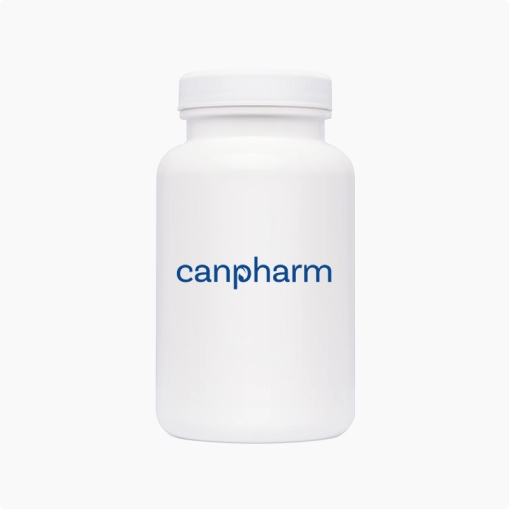
Fulphila (Pegfilgrastim)
Out of stock
We will notify you as soon as it becomes available.
-
Description
-
Related Products
-
Related Conditions
Fact Table
| Fact Table | |
|---|---|
| Formula | C845H1343N223O243S9 |
| License | FDA approved |
| Bioavailability | Subcutaneous administration |
| Legal status | Prescription Drug |
| Chemical Name | Pegfilgrastim |
| Elimination half-life | Approximately 15-80 hours |
| Dosage (Strength) | 6 mg/0.6 mL (injection) |
| Pregnancy | Consult your doctor (Category C) |
| Brands | Fulphila |
| Protein binding | Not significant |
| PubChem CID | 124065896 |
| MedlinePlus | a605016 |
| ChEBI | 83505 |
| ATC code | L03AA13 |
| DrugBank | DB00019 |
| KEGG | D05147 |
| Routes of administration | Subcutaneous |
Fulphila, also known as Pegfilgrastim, is a vital medication used in the treatment of neutropenia, a condition characterized by abnormally low levels of neutrophils, a type of white blood cell crucial for fighting infections. Neutropenia often occurs as a side effect of chemotherapy, particularly in cancer patients undergoing treatment. Pegfilgrastim belongs to a class of drugs known as colony-stimulating factors, which work by stimulating the bone marrow to produce more neutrophils, thereby reducing the risk of infection in patients undergoing chemotherapy.
Before you buy Fulphila, it is crucial that you talk to your healthcare provider about potential side effects and Fulphila cost.
Directions
Fulphila is administered as a subcutaneous injection, usually in the abdomen, thigh, or upper arm. Healthcare providers will typically administer this medication in a clinical setting, but in some cases, patients or caregivers may be taught to administer it at home.
The dosage of Fulphila depends on various factors such as the patient's body weight, the type of chemotherapy being used, and the specific protocol recommended by the treating oncologist.
Ingredients
Each pre-filled syringe of Fulphila contains: Pegfilgrastim.
Cautions
Some patients may experience allergic reactions to Fulphila.
Bone pain is a common side effect associated with Fulphila use. Inform your doctor if you experience severe or prolonged bone pain after receiving this medication.
In rare cases, Fulphila may cause an enlargement or rupture of the spleen. Seek immediate medical attention if you experience sudden or severe pain in the left upper abdomen or left shoulder.
Fulphila can sometimes cause respiratory problems such as acute respiratory distress syndrome (ARDS).
There have been reports of blood disorders such as sickle cell crisis and thrombocytopenia (low platelet count) associated with the use of Fulphila. Monitor your blood counts regularly as recommended by your doctor.
Some patients may experience fluid retention or swelling (edema) because of Fulphila treatment. Notify your doctor if you notice sudden weight gain or swelling in your hands, ankles, or feet.
Interactions
Avoid the use of live vaccines while receiving Fulphila treatment. The concurrent use of bone-marrow suppressing agents with Fulphila may increase the risk of bone marrow suppression. Your doctor will monitor your blood counts closely if such medications are used together. There are no known drug interactions between Fulphila and commonly used chemotherapy agents. However, always inform your healthcare provider about all medications you are taking, including prescription, over the counter, and herbal supplements.
Side Effects
Common side effects of Fulphila injection may include:
- Bone pain
- Pain or redness at the injection site
- Headache
- Fatigue
- Muscle pain
- Nausea
Frequently Asked Questions about Fulphila
What is Fulphila?
Fulphila is a biosimilar to Neulasta (pegfilgrastim), which is a type of medication known as a granulocyte colony-stimulating factor (G-CSF). It is used to help stimulate the growth of white blood cells in the body.
What is Fulphila used for?
Fulphila is used to reduce the risk of infection in patients undergoing chemotherapy. It helps in increasing the production of neutrophils, a type of white blood cell important for fighting off infections.
How is Fulphila administered?
Fulphila is administered via a subcutaneous injection, typically into the upper arm, thigh, or abdomen. It is usually given once per chemotherapy cycle.
Is Fulphila a chemo drug?
No, Fulphila is not a chemotherapy drug. It is a supportive medication used in conjunction with chemotherapy to help manage and mitigate its side effects, specifically the risk of infection due to low white blood cell counts.
Is Fulphila immunotherapy?
No, Fulphila is not classified as immunotherapy. It is a supportive care medication that aids the immune system by stimulating the production of white blood cells, but it does not modify or enhance the immune response to cancer cells directly as immunotherapies do.
How long do Fulphila side effects last?
The side effects of Fulphila can vary in duration depending on the individual. Common side effects such as bone pain may last a few days. If you experience any severe or persistent side effects, it's important to contact your healthcare provider.
When do you administer Fulphila?
Fulphila is typically administered 24 to 72 hours after the completion of each chemotherapy cycle. This timing helps to optimize its effectiveness in boosting white blood cell counts.
Is Fulphila long acting?
Yes, Fulphila is a long-acting form of filgrastim. It is designed to be administered less frequently, usually once per chemotherapy cycle, due to its extended duration of action.
Can Fulphila cause fever?
Yes, Fulphila can cause fever as a side effect. If you experience a fever or any other signs of infection, it's important to contact your healthcare provider promptly.
Is Fulphila a growth factor?
Yes, Fulphila is a granulocyte colony-stimulating factor (G-CSF), which is a type of growth factor. It specifically stimulates the bone marrow to produce more neutrophils, a type of white blood cell.
